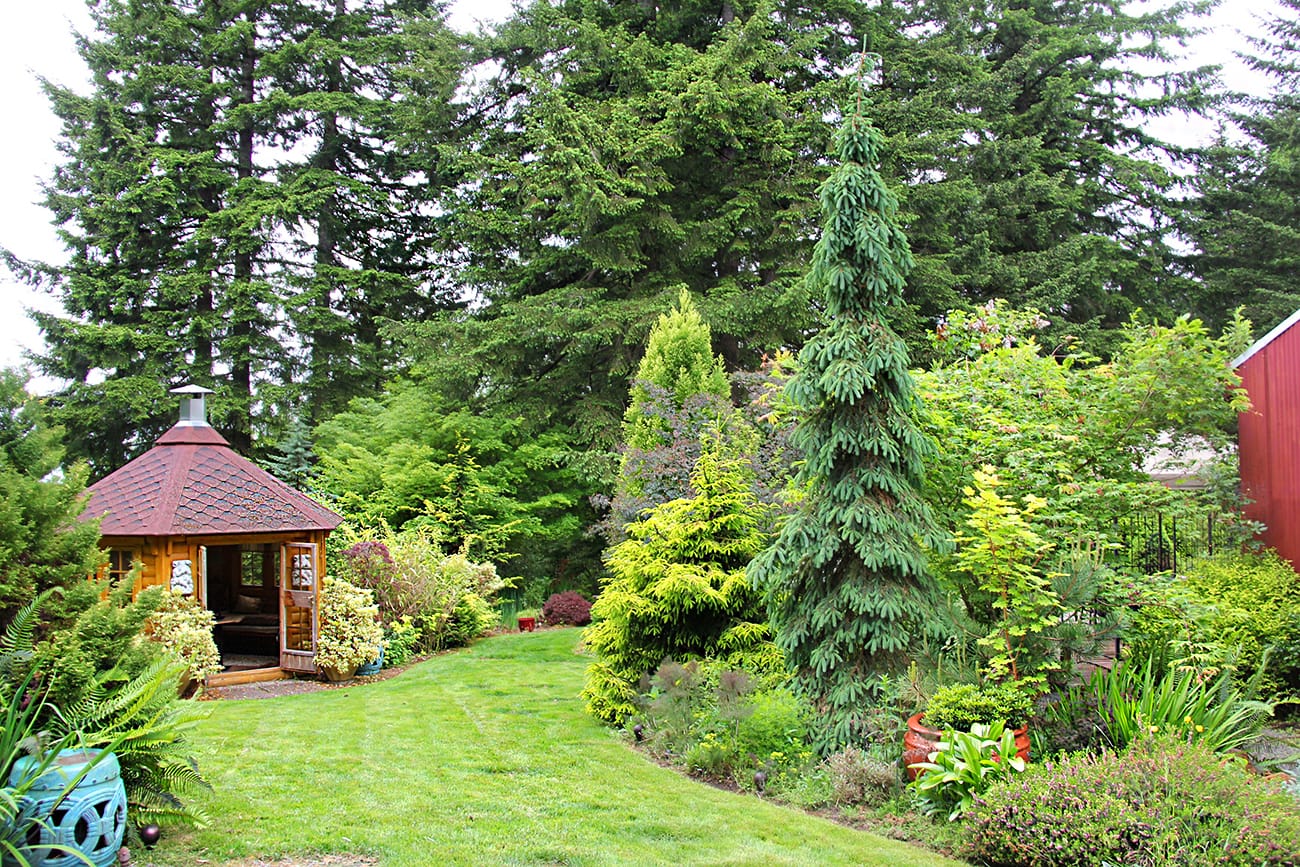The scent of summer lilies is so persistent that I was once accused of smelling like Tom Pouce when I returned home after an evening stroll through a garden. In case you’re wondering, Lilium “Tom Pouce” has large, fragrant rose-pink flowers with a lemon-yellow stripe. Tom blooms late in the lily season and is named for the Dutch pastry with pink icing on top and a butter cream filling. There is nothing comparable to the scent of oriental lilies but I’m still flattered by that delectable comparison.
Gardeners who love gladiolas can’t get enough of them. They come in a huge range of colors to compliment any flower border and add an elegant dimension to flower arrangements. Still, some gardeners complain to me about their short flowering period. You can’t make the blooms on a gladiolus last longer but you can extend the length of bloom in the garden by planting a portion of your gladiola bulbs every 10th day for a month. Then, when mature flowers begin to fade, new plants will be ready to flower.
The second complaint about “glads” is how easily they topple over at the slightest breeze or drop of rain. It’s true; they have a tendency to fall, especially since the bulb is planted close to the soil surface, grows tall and slim, and carries its flowers high on the stalk. They seem to be built to collapse in rain. For best results, stake gladiolas individually. Trying to stake a group of glads together just emphasizes the look of the swooning “femme fatale.” One goes and they all fall down. A tall, sturdy wire stake with a small loop at the top that fits around the stem works best.
If you find that you have blank spaces in a flower border late in the season, place pots and planters of flowering annuals with a long bloom season where they will detract from the void. Plant an assortment of large and small containers with a mix of colors that compliment your established garden. Plants in pots are easy to move around and there is any number of choices to fit every garden condition. Potted plants, and sometimes the pots themselves, create garden interest.
Years ago I began planting large pots with an assortment of hybrid lilies including the powerfully scented oriental lilies and a cross between the exotic oriental and regal trumpet lilies commonly referred to as orienpets. The classic Lilium x ‘Casablanca’ blooms in dazzling white in late July through early August.
One of the reasons I grow lilies in decorative planters is to outwit foraging deer. In the past, they have nipped the heads off all my lilies one or two days before bloom time, as if they were the finest asparagus shoots, a light appetizer before moving on to the main course, roses. So I grow them in pots in a protected area until I feel that it’s safe to move them into the garden.
Another benefit of growing lilies and other tall, single-stemmed plants in large planters is the ability to build an attractive, sturdy support system into the planter. One example is to place bamboo stakes equidistant around the perimeter of the pot and use a light twine to fence in tall, sturdy stems. Done neatly, this form of staking looks fitting for large potted plants, where it might seem forced or confining when done out in a flower border.
Many perennials or biennials with a short blooming period such as foxgloves, lilies and irises, look magnificent in containers and grow well in such temporary quarters. I also suggest growing perennials in pots to see whether or not you want to grow them in your garden. By placing the trial plants amid established garden plants, you can determine how well they will grow together in the same border. When your new favorites have finished flowering, transplant them directly into the garden border.
I have several simple, classic glazed pots in neutral colors planted with single boxwood shrubs. I use these in the same manner as flowering planters to fill empty spaces, especially in winter. I also use them together — for example, one on either side of a walkway to direct guests along a path that will lead them to an attractive seasonal flower border. Grouped in strategic locations, they break the monotony of a terrace or a patio and add ambience to the scene.
Robb Rosser is a WSU-certified master gardener.



